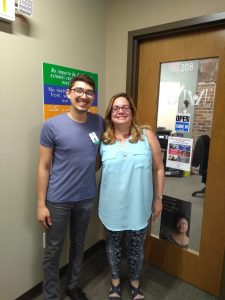Demonstrate Ethical and Professional Behavior
Practice Behaviors:
1.1 – Be aware of ethical decisions in accordance with the NASW Code of Ethics, relevant laws and regulations, models for ethical decision-making, ethical conduct of research, and additional codes of ethics as appropriate to the context.
1.2 – Use reflection and self-regulation to manage personal values and maintain professionalism in practice situations.
1.3 – Demonstrate professional demeanor in behavior; appearance; and oral, written, and electronic communication.
1.4 – Use technology ethically and appropriately to facilitate practice outcomes.
1.5 – Use supervision and consultation to guide professional judgment and behavior.
One of the first steps to becoming a professional in any field is learning how to become a professional in the first place. As a social work student, I have had many different opportunities within the classroom and in my practicum to learn the skills that are needed to be a competent social worker. One of the main focuses of competency one is being able to recognize, understand, and utilize the National Association of Social Worker’s code of ethics and taking steps to become a professional.
Evidence 1 (Class): In my Social Work Practice with Individuals (SOCW-309) class, I was able to write an analysis paper on an interview I had conducted and was able to demonstrate self-regulation to help maintain professionalism. I did this by providing verbatim self-corrections that I would have done in the interview. I also provided a critical analysis of areas I could improve on and what I would do to correct those issues. To read the analysis paper, please click here.
Evidence 2 (Field): During my senior practicum, I recognized when a volunteer breached the NASW code of ethics when they failed to treat a client with dignity and respect. In response, I reached out to my task supervisor and my field instructor to learn what to do in this situation. I learned that the volunteer was retiring and that a new person would be taking over the orientation. To learn more about this situation, please click here and see week 1.

Evidence 3 (Additional): For the junior practicum, I learned the importance of dressing professionally as can be seen on the right. Each time I would go to my practicum placement, I would dress in business casual and wear my Southern name badge. This helped me to develop a more professional demeanor and attitude. For more information, click here.
Skills Used: This competency required that I used active listening when interviewing clients, analyzing information that was presented during intake and other client meetings, and critically applying knowledge to help provide clients with the necessary resources.
Knowledge Used: Most of the knowledge that I used was based on my classes. For example, Networking and Career Development (SOCW-413) helped to teach me how to dress appropriately and how to be professional in an interview. Interviewing Skills (SOCW-213) and Social Work Practice with Individuals (SOCW-309) helped me in interacting with clients more efficiently.
Values Presented: I was able to present the value of Dignity and Worth of the Person by treating each of my clients as the expert of their situation and letting them choose what they wanted to do. Another value I used was Integrity with my clients by keeping client files on my computer secured with password-protection software and keeping casefiles locked in their respective locations at the Bridge office.
Cognitive Processes Used: Some of the cognitive processes that I used for this competency would be recognizing the NASW code of ethics in practice and how different situations either followed or deviated from those values. I was able to understand how the code of ethics played in daily work and how important professionalism is in the workplace. For example, I noted how there was a potential breach of confidentiality in my practicum setting. Client files were located in a highly visible location and if a case file was opened, there was a high probability that people walking past the door would be able to see case files.
Affective Processes Used: For the affective processes, I used examination to organize and document client files. Another process I used was cooperation when working with my case manager, task supervisor, volunteers, clients, and others when at my practicum. As in the previous example, I was able to help organize and refile client files to a better, more secure location. This was in accord with the NASW Code of Ethics by protecting confidentiality.
Theoretical Foundation: For this competency, I used Self-Regulation Theory to help me coordinate my behavior and responses to conscious and unconscious bias while I was at my practicum. I did this with the use of supervision and through the weekly journals.
